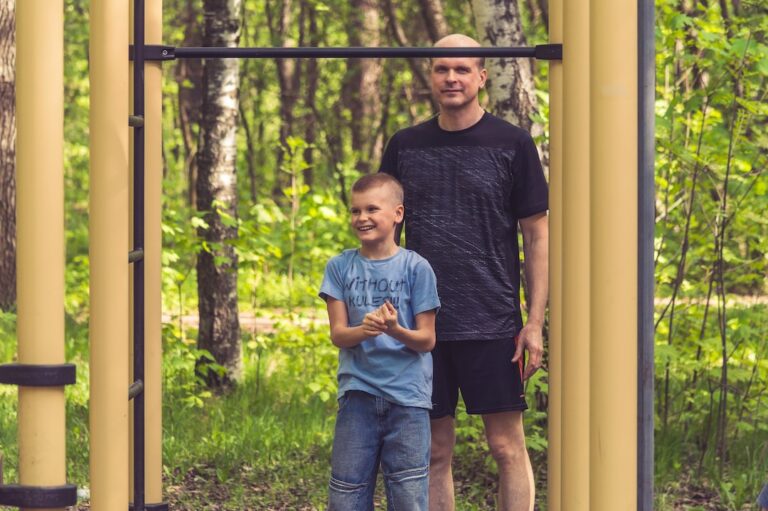Welcome to the world of parenting, where boundless love and unwavering dedication become the cornerstone of our lives. As a mother, I have personally experienced the incredible journey of nurturing a child and witnessing their growth. One aspect that has particularly caught my attention is the concept of attachment bond and its profound impact on both the child’s development and the parent-child relationship. In this article, we will delve into the depths of attachment bond, exploring its definition, significance, and invaluable advice to help you foster a strong and healthy connection with your little one.
What is Attachment Bond?
Attachment bond refers to the deep emotional connection that develops between a parent or caregiver and their child. It is an instinctual and biologically-driven bond that plays a crucial role in shaping a child’s social, emotional, and cognitive development. The attachment bond is not limited to a specific gender or biological relationship; it can be formed between any primary caregiver and child.
Attachment bonds are built through consistent and responsive caregiving, where the child feels safe, secure, and loved. It involves the exchange of affection, emotional attunement, and the establishment of trust between the parent and the child. This bond serves as a foundation for the child’s future relationships and influences their overall well-being.
Why is Attachment Bond Important?
The attachment bond is essential for several reasons, as it lays the groundwork for healthy development and fosters resilience in children. Here are some key reasons why nurturing an attachment bond is crucial:
- Promotes Emotional Security: When a child feels securely attached to their parent, they develop a sense of emotional security. This security acts as a buffer during times of stress or adversity, enabling the child to better regulate their emotions and navigate challenges.
- Enhances Social Skills: Children who have formed a secure attachment bond tend to have better social skills and stronger relationships in life. They learn how to trust others, empathize, and communicate effectively, laying the foundation for healthy interactions throughout their lives.
- Supports Cognitive Development: A secure attachment bond positively impacts a child’s cognitive development. When children feel safe and loved, they are more open to exploring their environment, taking risks, and engaging in learning experiences that promote cognitive growth.
- Affects Future Relationships: The quality of the attachment bond in early childhood can influence a child’s future relationships. Children who form secure attachments are more likely to have healthier relationships, experience less anxiety, and have greater intimacy in their adult relationships.
- Builds Resilience: An attachment bond built on trust and emotional support helps children develop resilience. They learn that they can rely on their caregiver for comfort and reassurance during difficult times, which strengthens their ability to cope with life’s challenges.
Advice for Fostering a Strong Attachment Bond:
Fostering a strong attachment bond with your child is a journey that requires love, patience, and consistent effort. Here are some valuable tips to help you strengthen the bond with your little one:
1. Practice Responsive Parenting:
Being responsive to your child’s needs and cues is fundamental in building a secure attachment bond. Respond promptly and sensitively to their cries, smiles, and gestures. This shows them that they can trust you to meet their needs, fostering a sense of security.
2. Establish Routines and Rituals:
Create predictable routines and rituals with your child. Regular activities such as reading bedtime stories, family meals, or playtime rituals not only provide structure but also serve as opportunities for connection and bonding.
3. Show Unconditional Love:
Express your love for your child freely and unconditionally. Offer hugs, kisses, and words of affection regularly. Let them know that your love and support are unwavering, regardless of their behavior or mistakes. This builds a strong foundation of trust and security.
4. Practice Active Listening:
When your child communicates, make it a priority to actively listen and respond. Show genuine interest in what they have to say and validate their feelings. This fosters open communication and strengthens the emotional connection between you and your child.
5. Engage in Playful Interactions:
Play is a powerful tool for building attachment. Engage in interactive and imaginative play with your child. Follow their lead, be present, and enjoy the moment together. Playful interactions create joyful memories and deepen the bond between parent and child.
6. Create a Safe Haven:
Establish a safe and nurturing environment for your child. Ensure they feel physically and emotionally safe in their home. This includes providing consistent discipline, setting appropriate boundaries, and offering a comforting presence during times of distress.
7. Take Care of Yourself:
Remember, self-care is vital for building a strong attachment bond. Prioritize your own well-being, both physically and emotionally. When you take care of yourself, you are better equipped to meet your child’s needs and nurture a healthy relationship.
Frequently Asked Questions:
- Q: Can an attachment bond be formed with someone other than the child’s biological parent?
A: Absolutely! Attachment bonds can be formed between a child and any primary caregiver who consistently provides love, care, and support. This could include adoptive parents, foster parents, or other family members.
- Q: What if I am struggling to form an attachment bond with my child?
A: Building an attachment bond takes time and effort. If you are struggling, consider seeking support from a professional, such as a therapist or counselor who specializes in child development and attachment. They can provide guidance and strategies tailored to your unique situation.
- Q: Does the attachment bond remain the same throughout a child’s life?
A: The attachment bond evolves over time as the child grows and develops. While the foundation of trust and security remains, the nature of the bond changes to accommodate the child’s increasing independence and need for autonomy.
Positive Self-Talk for Kids: Empowering Strategies to Boost Confidence and Resilience
How Social Media Impacts Teenage Self-esteem: A Guide to Protecting Your Child’s Mental Well-being
Breaking the Cycle: How to Create a Loving and Supportive Family Environment
9 Critical Reasons Why Punishment Doesn’t Work for Your Child: Alternative Discipline Techniques for Positive Parenting
Supporting Your Child’s Growth: Nurturing Development in the Formative Years
Why Parenting Can Be a Struggle and How to Make It Easier: Simple Ways to Prioritize Self-Care and Improve Communication
How Parental Love Impacts a Child’s Success and Ways to Nurture It
Teaching Respect to Kids: 6 Highly Effective Ways to Instill this Vital Virtue
The Power of Parenting: Unveiling the Difference Between Authoritative and Authoritarian Styles
Internalizing Behavior in Children: Understanding, Examples, and Support
Healing Disorganized Attachment: 7 Signs, Causes & Effective Strategies
Reinforcement vs Punishment: The Ultimate Guide to Positive Parenting Techniques
Responsive Parenting: Unlocking the Secret to Raising Happy and Successful Children
When Do Kids Become Adults? Supporting Your Child’s Journey Towards Adulthood
Manipulative Parents: Signs, Effects, and How to Protect Your Child’s Well-Being
As a mother, I have witnessed the incredible power of attachment bond in shaping my child’s growth and overall well-being. Nurturing this bond has brought immense joy and fulfillment to my parenting journey. Remember, building a strong attachment bond requires patience, consistency, and unconditional love. Embrace the journey, and cherish the profound connection that you are forging with your little one.















